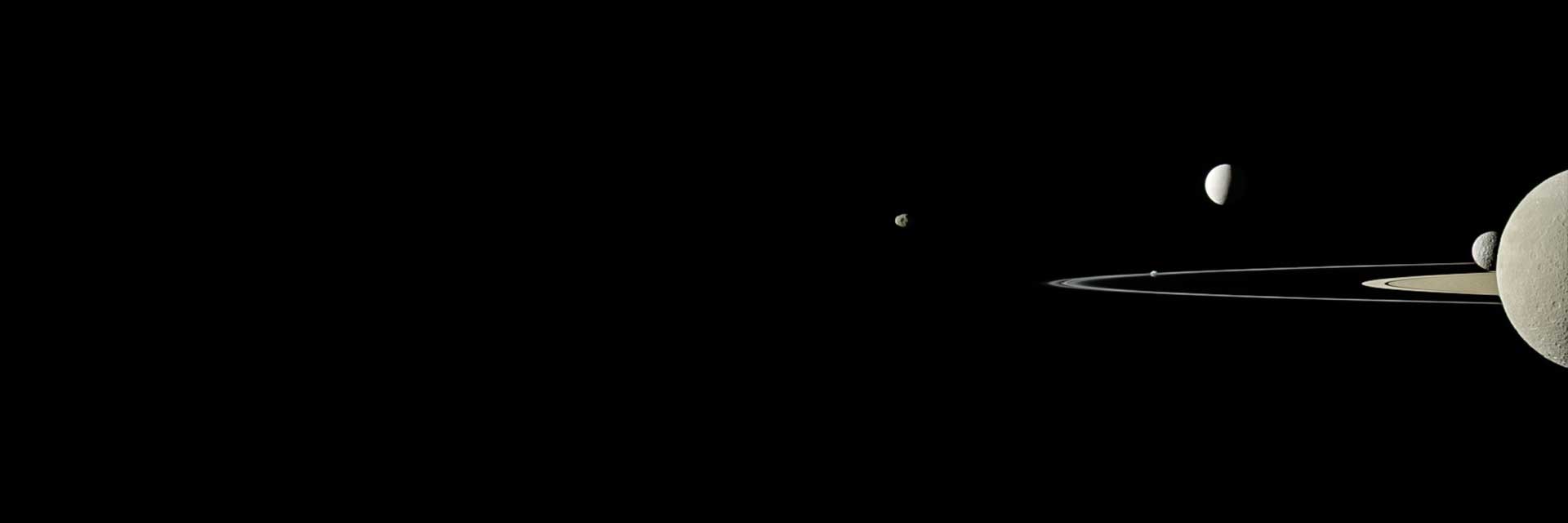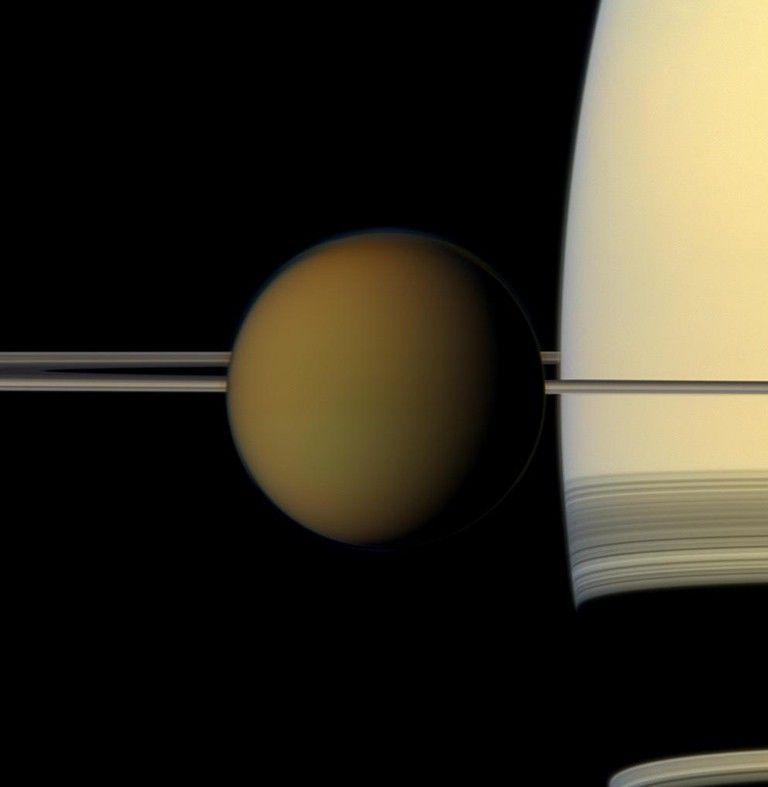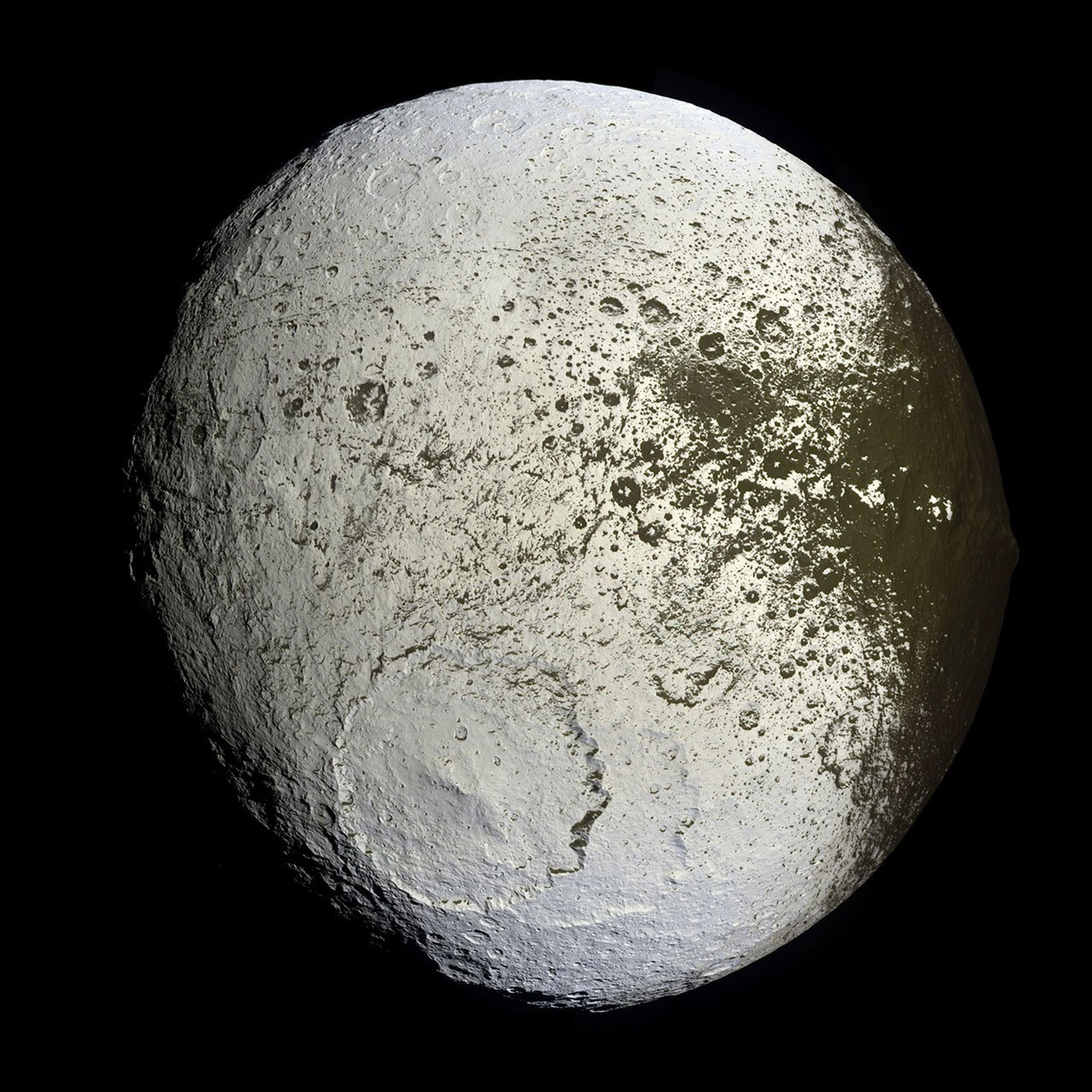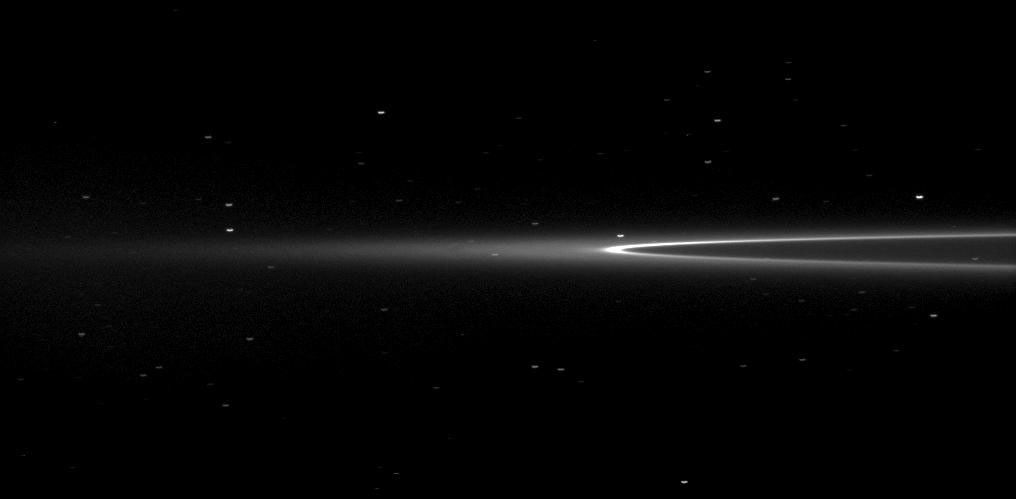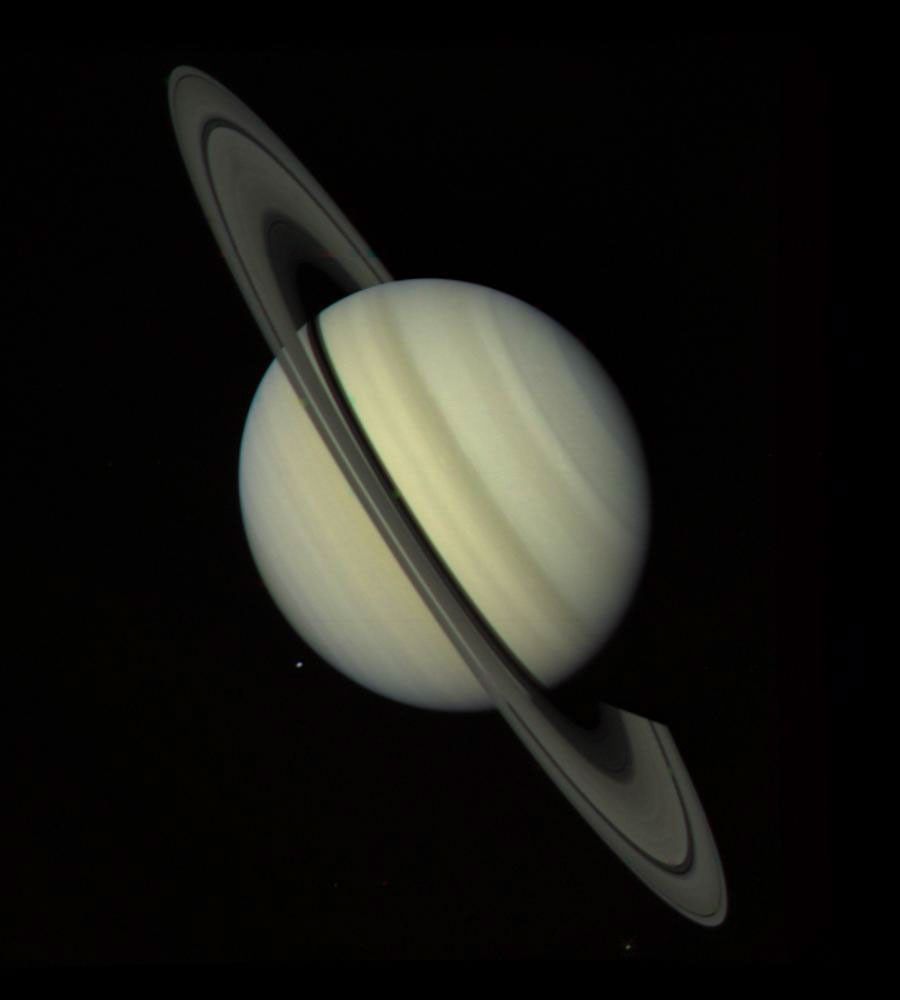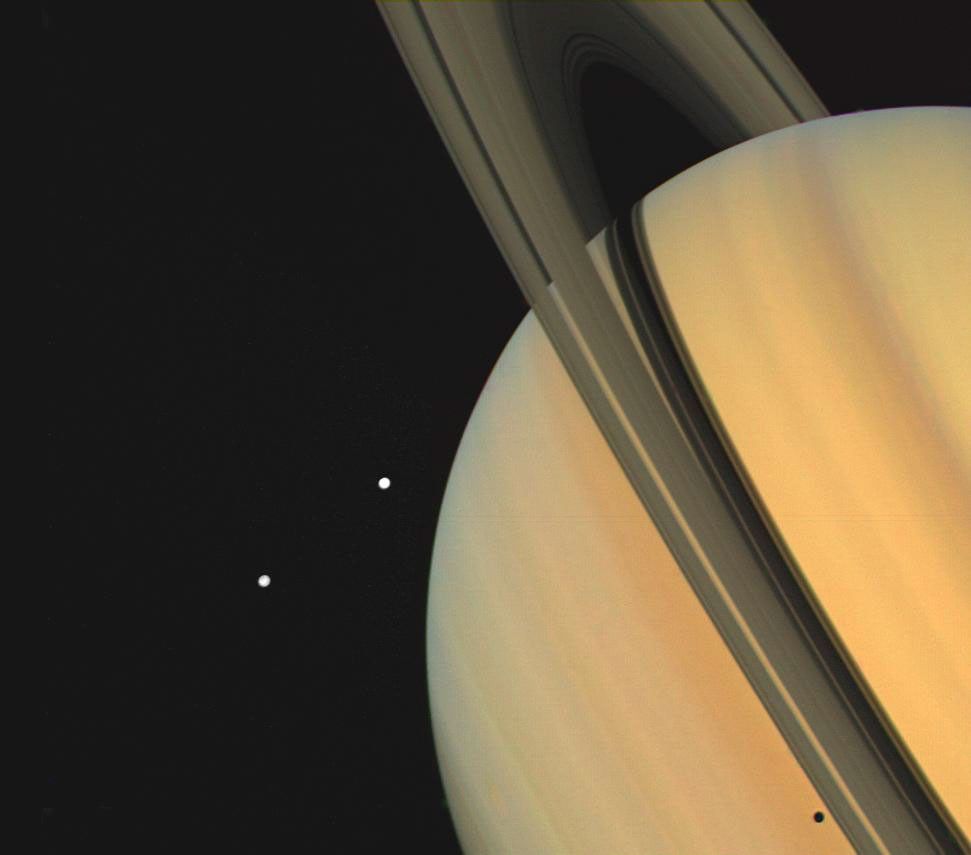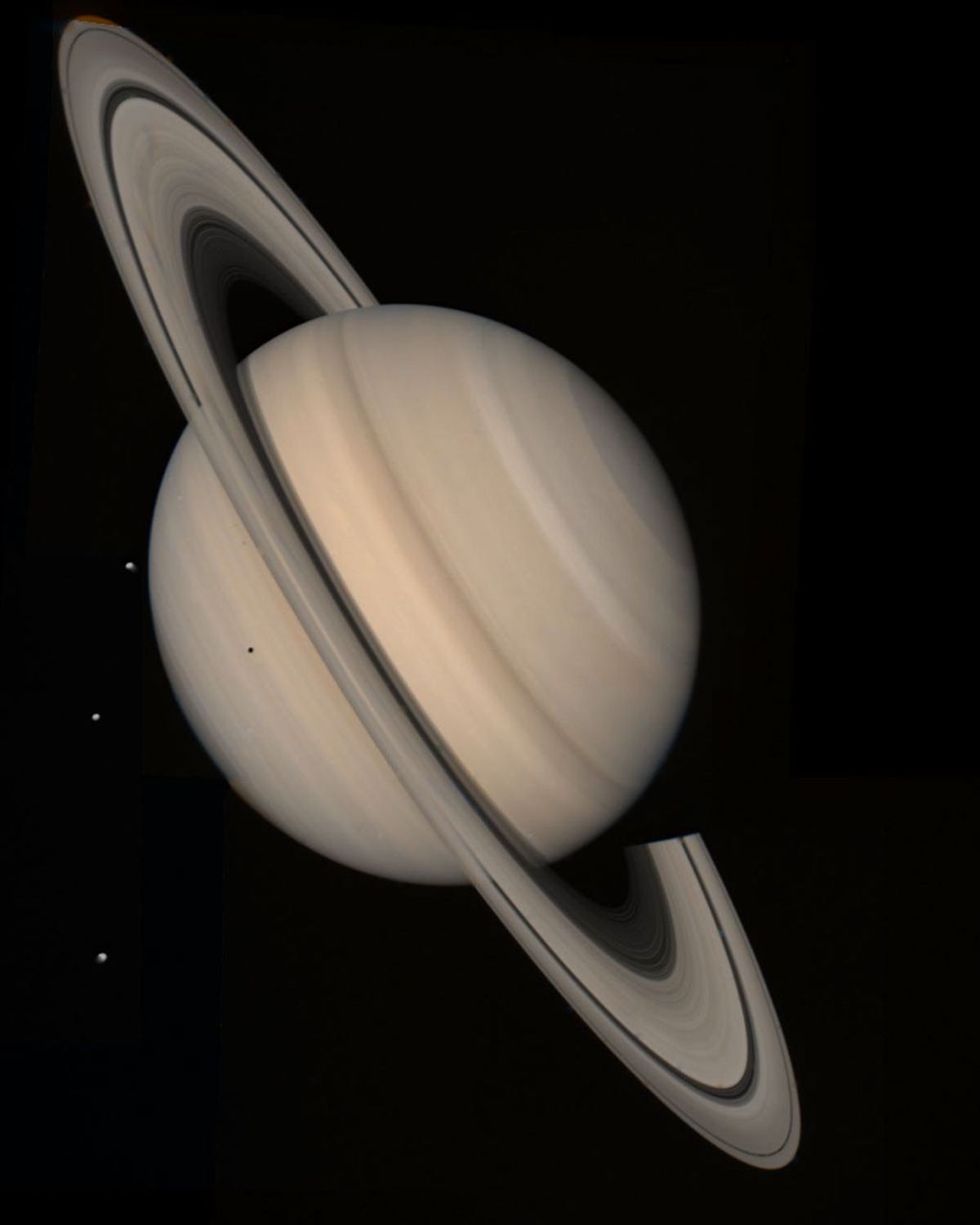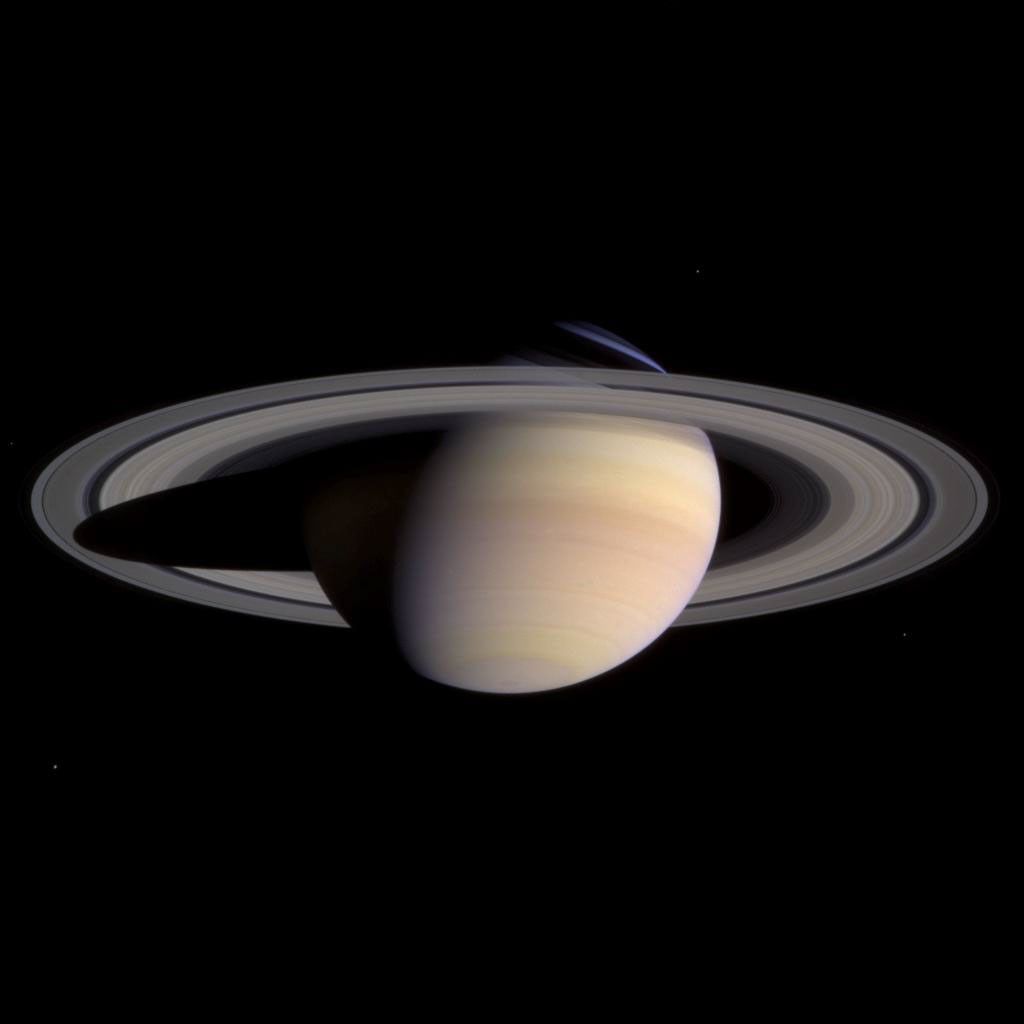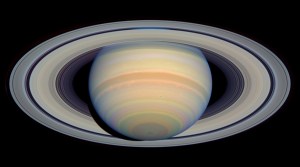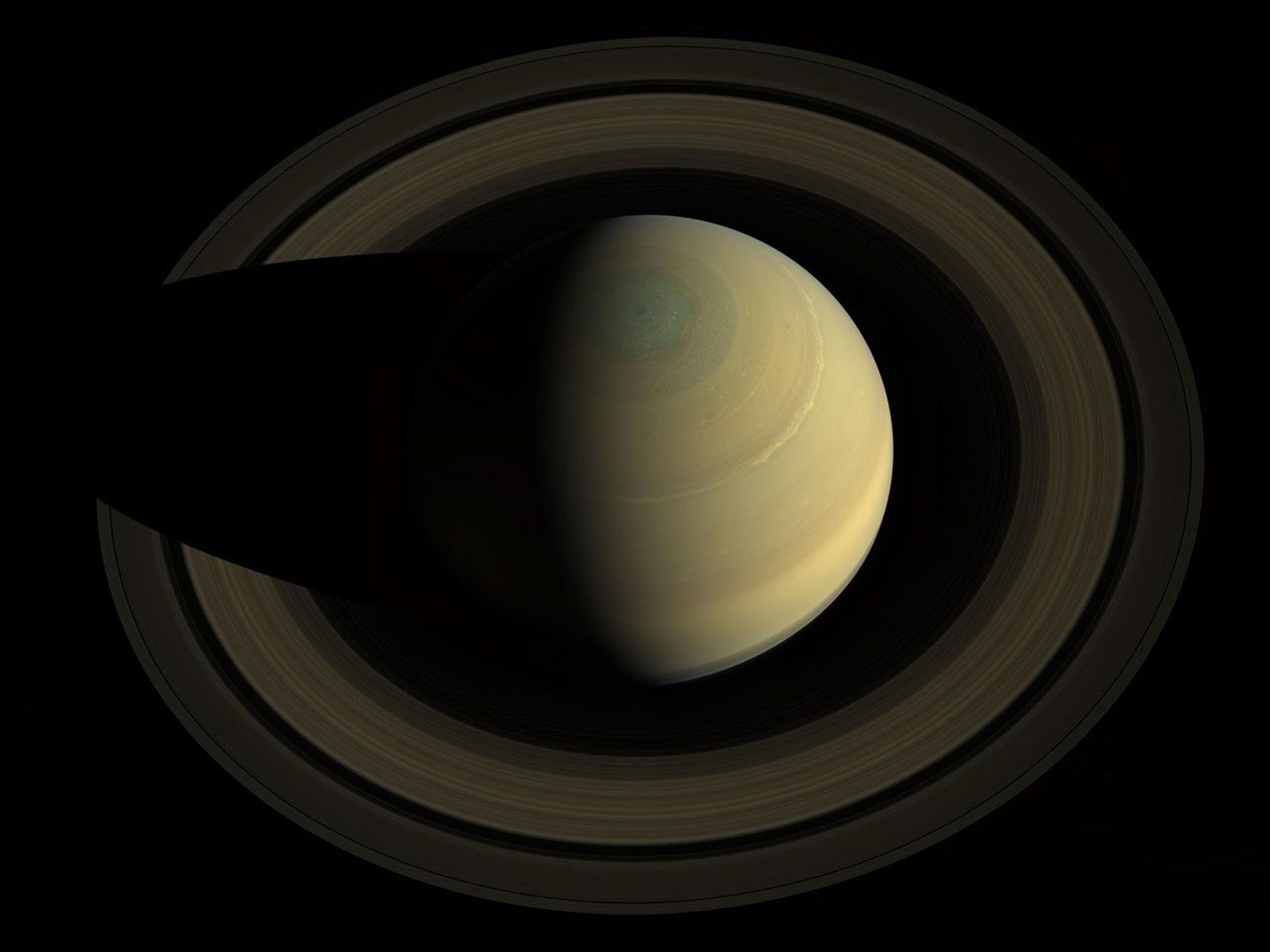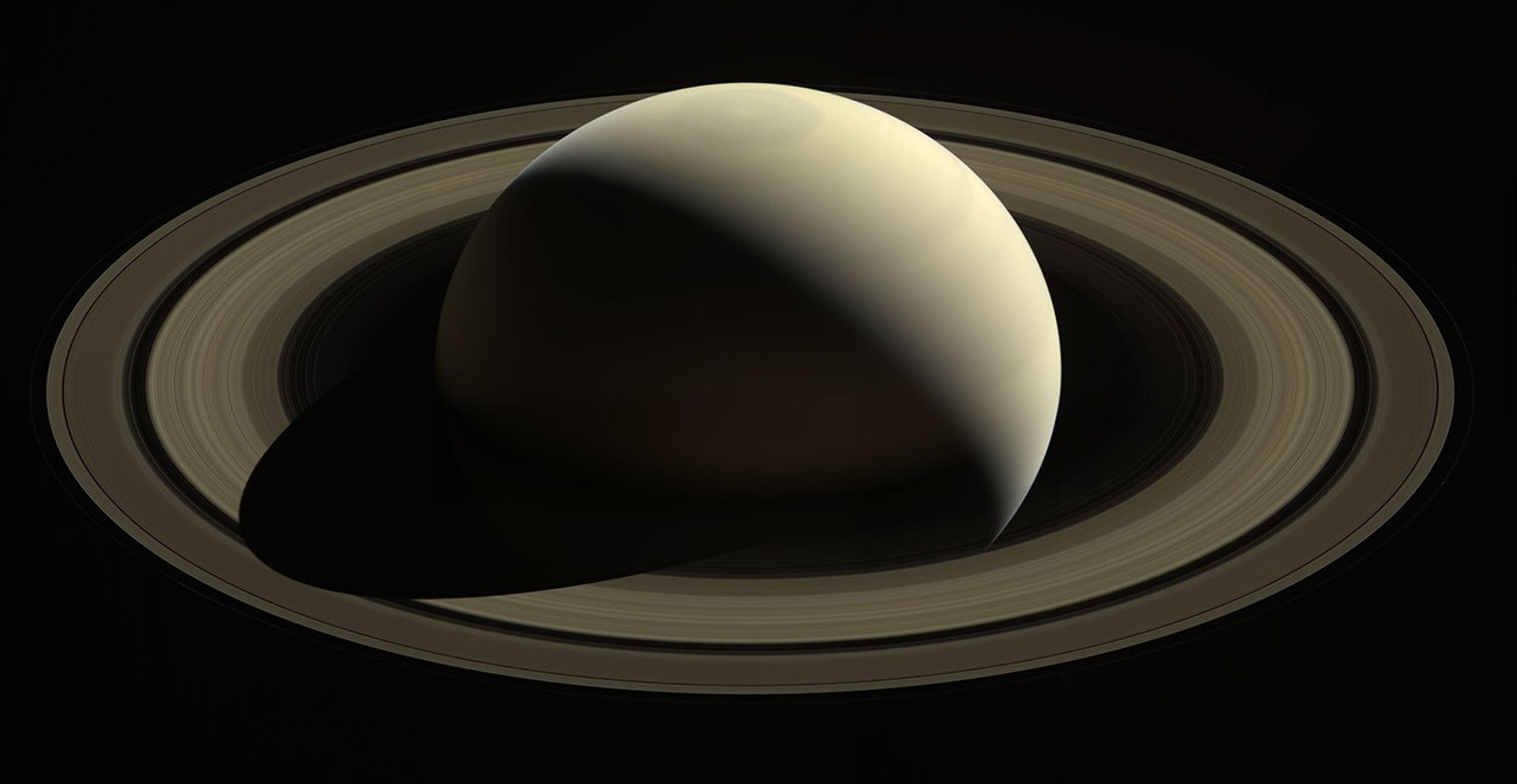Overview: Saturn's Moons
The Voyager and Pioneer flybys of the 1970s and 1980s provided rough sketches of Saturn’s moons. But during its many years in Saturn orbit, Cassini discovered previously unknown moons, solved mysteries about known ones, studied their interactions with the rings and revealed how sharply different the moons are from one another.
Key Points
◆ Saturn’s dozens of moons range in size from larger than planet Mercury down to about the size of a sports arena.
◆ Cassini found water continually spewing out of jets around the south polar region of Saturn’s moon Enceladus, and scientists concluded that its subsurface ocean has all the ingredients for life – liquid water, heat, and food (methane).
◆ Among Saturn’s natural satellites, Cassini found the only known world aside from Earth’s moon to have a statically charged surface (Hyperion).
◆ Saturn’s moons contribute material to Saturn’s rings and magnetosphere, but the moons also collect material from Saturn’s rings and magnetosphere.
◆ Saturn’s moons range in size from smaller than a football stadium to larger than the planet Mercury, and they vary in color, texture and composition.
◆ While the larger moons are spherical, others are shaped like a sweet potato (Prometheus), a regular potato (Pandora), a meatball (Janus), and even a sponge (Hyperion). Some have a gnarled, irregular shape and texture like a dirty ice-ball (Epimetheus). One object observed in the rings (and unofficially called Peggy) may be a moon forming or disintegrating, or it might not truly be a moon at all.
Four spacecraft have visited the Saturn system, but Cassini alone orbited the ringed planet. Doing so bought Cassini time – more than a decade – to linger and watch Saturn’s exotic zoo of moons like no spacecraft before. Cassini looked, listened, sniffed and even tasted Saturn’s moons, and what it learned about them is nothing less than extraordinary.
Habitability Outside the Habitability Zone
Haze-enshrouded Titan is Saturn’s largest moon and the solar system’s second-largest, and an all-around exceptional place. Titan is the only known world other than Earth where any sort of liquid collects on its surface.
Earth has liquid water oceans because it orbits within the solar system’s habitable zone, the range of distance from our Sun that is neither so hot that oceans boil away nor so cold that they’re frozen. The Saturn system is far outside of the habitable zone, and Titan’s surface temperature is so cold that the moon’s surface is largely water ice instead of rock. But the temperature is just right for liquid methane and ethane.
Cassini scientists found not only that liquid methane and ethane exist on Titan, but that they rain from the sky and fill liquid lakes, which are as wide as several hundred miles (or kilometers) and as deep as hundreds of feet (or meters).
Despite Titan’s distance from the Sun, Cassini also found evidence of a global (or at least regional) liquid water ocean below its frigid surface, but Titan isn’t the only Saturnian moon that boasts of a subsurface sea. Read more on Titan.
Cassini scientists were astonished when they found a plume spraying water vapor, icy particles and simple organic materials into space from the south polar region of Enceladus. Scientists determined that the jets are the source of material for Saturn’s E-Ring. The jets spew out of great fissures, or cracks, known as “tiger stripes,” which Cassini scientists found grow wider or narrower depending on where Enceladus is in its orbit around Saturn.
Observations of its gravity and the contents of the plume suggested that Enceladus almost certainly contains a subsurface liquid water ocean near its southern polar region. Now more and more Cassini data indicates that Enceladus is home to a global (not just regional) ocean, and the jets near the south polar region are powered by hotspots, where heat from the interior ocean escapes.
On Earth, hydrothermal vents at the ocean floor can produce habitats where organisms can flourish, completely cut off from sunlight. Many scientists suspect that life on Earth might have begun around these undersea environments. The evidence is beginning to pile up that Enceladus might have hydrothermal vents too.
But vents or no vents, the Cassini mission showed that Enceladus appears to have all the components necessary for life. The food component is methane, which has been observed in surprising abundance in the plume, said Bonnie Buratti, a senior research scientist at NASA’s Jet Propulsion Laboratory. “Water, food, and heat — everything is there for life as we know it,” she said. “It’s all there.” Read more on Enceladus.
Even if Enceladus isn’t home to even simple organisms, the presence of the necessary conditions is itself a remarkable finding.
Moon Mysteries Managed
Enceladus and Titan get a lot of attention, but the Cassini mission also provided countless insights about dozens of Saturn’s other moons.
The moon Mimas, whose Herschel Crater makes it look like the Death Star from "Star Wars," was thought to be an old, dead world, according to Cassini project scientist Linda Spilker. But Cassini scientists found evidence that it too may have a subsurface ocean, or at least a football-shaped water-ice core. “It’s curious. Mimas and Enceladus are the same size,” Spilker said, but Enceladus has water jets while Mimas appears not to. The reason for their differences is unknown.
Cassini also found thin atmospheres around the moons Dione and Rhea – but we’re talking thin, around 5 trillion times less dense than at Earth’s surface.
Hyperion can’t boast any sort of atmosphere, but the tumbling, sponge-looking moon does build up a static charge, which scientists realized when Cassini passed through a beam of electrons coming up from the moon’s surface. Hyperion is the only object in the solar system other than Earth’s moon that’s been confirmed as having a charged surface.
Cassini also solved the centuries-old puzzle about why the moon Iapetus has one snow-white hemisphere while its other hemisphere is nearly as dark as charcoal. Iapetus is tidally locked, so it always shows the same side to Saturn, and one side always faces the direction in which it’s orbiting. It turns out that dark material falls on Iapetus’s leading side.
“It’s coming actually from [the outer moon] Phoebe’s ring — it’s Phoebe dust,” Spilker said. The moon Phoebe creates one of Saturn’s rings, and Iapetus is flying through its debris. “Headed forward, you get all the bug splats,” Spilker said. At the same time, ice migrates to the poles, not by sliding but by sort of hopping, a molecule at a time.
On the moon Tethys, Cassini observed mysterious red arcs, though they weren’t easy to see. “We didn’t even see them until a Cassini scientist started looking in the near-infrared,” Spilker said. In the infrared, the red arcs are obvious, as if someone dragged a giant red crayon across the surface of a golf ball. The arcs don’t appear to be related to any physical features of the moon’s surface, such as valleys or fractures. “They go up mountains and down into craters,” Spilker said. “But there’s no obvious fractures.”
If the red arcs are coming from fractures, they’re too small to see at the resolution Cassini’s instruments provided. The arcs are also unevenly distributed on the moon’s surface. “It’s only the north,” Spilker said. “Why aren’t they in the south? It’s just sort of a late-mission mystery.”
As scientists continue to analyze Cassini’s data, they will likely solve more mysteries about Saturn’s menagerie of moons, and they will almost certainly find more mysteries that need solving.




























